It was the early 1940’s, and a teacher in a small school in Berkeley, CA was frustrated. He needed to find some willing kids to play the few remaining musical instruments he had lying over there collecting dust in the corner. When 11-year-old Jerry Marcellino walked into the classroom, the teacher didn’t hesitate. “Hey Jerry, you gotta learn to play an instrument. What’ll it be?” He said he had a trombone, a drum, and a clarinet – Jerry picked the clarinet. It was a random moment that took all of about two minutes, but it was a conversation that would ultimately affect the careers of Michael Jackson and others.
Jerry went on to become one of the most successful creative forces in the music industry: producing for The Jackson 5, Diana Ross, The Four Tops, Smokey Robinson, Al Jarreau, Lionel Richie, and countless others. His music has sold over 50 million albums worldwide, including 25 Gold and Platinum records.
From the moment he touched that clarinet, Jerry was a natural. “I knew right away I loved music,” Jerry recalls. “I’d listen to Benny Goodman and do my best to emulate him.” By the time he graduated high school, Jerry’s band, The Honeydrops, was opening for acts like Sam Cooke, Jerry Lee Lewis and Little Richard. By then, Jerry had moved on to the sax. He had also met and married his wife, Kathy, moved to Danville and set about having three kids.
Of course, we had to ask Jerry about some of the legends. “Well,” Jerry tells us, “Little Richard. Didn’t get to spend much time with him. He was very private. He would come out, join his big band, do his thing and go back to his dressing room again. But I’ll tell you who was really a sweet guy, and he loved to talk with you, was Sam Cooke, who was a tremendous talent and very humble.” We asked Jerry to please keep going. We eat this stuff up.
“And then there was Chuck Berry,” Jerry says, smiling. “What a character. He came to the concert with a beat-up guitar and said, ‘Do you have any extra strings; I need a G string.’ He didn’t even have a replacement string. We had to run and get strings for his guitar. He was a little different.”
For the next twelve years, Jerry played in clubs in North Beach, San Francisco, and San Mateo. All the while, he and his then-partner, Mel Larson, were writing songs. It was then Jerry experienced his first songwriting successes. First, a hit record for Trini Lopez called Sad Tomorrows on Reprise Records. Then another for Martin Denny on Liberty Records called Strawberry Tree, and another on the hit album Figurines by The Fleetwoods. But Jerry wasn’t satisfied.
“I got pretty tired of playing gigs,” Jerry laments. “And just about that time a bouncer in one of the clubs I was working, Dino, said he was going to work in Hollywood and he wanted to take our tape with him so he could play it for some people.” The bouncer became a bartender at Dante’s, the legendary jazz club on Lankershim Blvd., North Hollywood. Not long after, he ended up at a party where he played Jerry’s tape for Herb Alpert, who loved it. The bouncer became Jerry’s manager, and Jerry packed up the wife and kids and moved to Hollywood. He would then move to produce one successful project after another. But we’re getting ahead of ourselves.
Jerry recorded for Alpert’s company, A&M, on Vibrations Productions as a partner with the Tijuana Brass for the next couple of years. But when Mr. Alpert decided he was done with touring, Jerry knew it was time to move on. “It was a sad day,” Jerry recalls, “but it worked out well for us. I’ve been very lucky.”
It was 1970, and Jerry was looking for a new company to produce for. After meeting with Nancy Sinatra at her company, and later with Hal Davis, who was running Motown Records at the time, Jerry’s music went straight to Berry Gordy, who immediately signed him and his partner as songwriters. Jerry laughs appreciatively, saying, “We didn’t miss a beat.” Even though Jerry had yet to have a major hit, Motown saw his talent. They wanted him to start producing immediately.
Suddenly, Jerry found himself at Hitsville, the famed studio, producing tracks for The Miracles, Frankie Valli and Bobby Darin. Jerry recalls, “We were in shock. We went back to our office and said, ‘My God, we can go ahead and do whatever we want. We can produce, we can write the songs.’ It was amazing. Back then, the artists didn’t have much to say. Motown would book the musicians we wanted, we’d sit with an arranger and boom, we’d go in the studio and cut it live.” Jerry pauses, and with a wry smile says, “It was beautiful times, believe me.”
Jerry continues, beaming. “I got to work with Frankie Valli from the Four Seasons, who was briefly with Motown. He was there for only one album. I also got to work with Bobby Darin and that was a thrill. Great, tremendous opportunities.”
Jerry spent eight years at Motown, also serving three years as an elected Governor of the Board of NARAS (The National Academy of Recordings Arts and Sciences, A.K.A. The Grammy Organization).
During his time at Motown, Jerry produced Michael Jackson’s first number one hit, Rockin’ Robin, in 1972. Jerry recalls, “We were there for eight years mostly just producing for Michael. Of course, we had the other albums that we did for The Jackson 5, like Dancing Machine and Music and Me … so many wonderful albums.”
Jerry pauses for a moment, reflecting on the friendship he built with Michael. “I visited Neverland. I even took my mother out there on her birthday. He was just a great, great person, a beautiful kid. We used to scribble out sketches … we both liked to draw cartoons and stuff, so we exchanged cartoons.” Jerry says with more than a hint of melancholy, “I don’t know what happened to them.”
“He observed everything,” Jerry continues. “It’s why Michael became a great producer himself. He would take notes, even as a kid. And then, you know, he liked to play games.” Jerry smiles as he recalls some of Michael’s antics. “He’d call up and say, with a really high voice, ‘This is Dr. Johnson,’ and he’d tease for a while until he revealed it was really him, as though I didn’t know.” But as Jerry remembers, it wasn’t all joking around with Michael. “He was a sensitive kid, protected by the family to the point where he didn’t get to lead a normal life like other kids. He lived in his imagination, spending his time in his own cottage in the back of the property in Encino. He had monkeys and all kinds of animals, and they were his friends.” And then, Jerry described Michael in a way we’ve heard from many others. “In a way, he was like Peter Pan.”
After Motown, Jerry returned to A&M where he spent the next five years producing and writing. He then cut his own album, Third Heaven, which landed on the smooth jazz charts. Jerry continued producing different acts, including Sha Na Na, for whom he produced their 25th Anniversary album.
But hit records weren’t the only thing Jerry produced. In 1979, Jerry got a call from Chuck Kaye, the head of Almo/Irving Music at A&M. Chuck explained that his good friend was one of the new owners of the San Diego Chargers and, well they’re looking for a new theme song. So Jerry went to work. Now it’s one of the longest running songs in the history of sports.
About that time, Jerry moved to Vegas, where he continued to perform, produce and write. Meanwhile, his three sons had each gone on to successful careers of their own in the business. And then, about four years ago, it all came around. Jerry got a call from his son Yochanan, who was producing a major studio film. “He said, ‘Dad, you gotta come back here and produce and write 20 original songs for the movie,’” Jerry says, smiling. “Well, I did the music, Yochanan put the film together, and my grandson Dustin directed!” The film was The Identical, which was released in 2014 starring Ashley Judd, Ray Liotta (who is currently starring in NBC’s Shades of Blue with Jennifer Lopez), Joe Pantoliano, Blake Rayne and Seth Green. “It was really wonderful because it was music from the ’50s, ’60s and ’70s, which I knew well.”
Jerry went on to become one of the most successful creative forces in the music industry: producing for The Jackson 5, Diana Ross, The Four Tops, Smokey Robinson, Al Jarreau, Lionel Richie, and countless others. His music has sold over 50 million albums worldwide, including 25 Gold and Platinum records.
From the moment he touched that clarinet, Jerry was a natural. “I knew right away I loved music,” Jerry recalls. “I’d listen to Benny Goodman and do my best to emulate him.” By the time he graduated high school, Jerry’s band, The Honeydrops, was opening for acts like Sam Cooke, Jerry Lee Lewis and Little Richard. By then, Jerry had moved on to the sax. He had also met and married his wife, Kathy, moved to Danville and set about having three kids.
Of course, we had to ask Jerry about some of the legends. “Well,” Jerry tells us, “Little Richard. Didn’t get to spend much time with him. He was very private. He would come out, join his big band, do his thing and go back to his dressing room again. But I’ll tell you who was really a sweet guy, and he loved to talk with you, was Sam Cooke, who was a tremendous talent and very humble.” We asked Jerry to please keep going. We eat this stuff up.
“And then there was Chuck Berry,” Jerry says, smiling. “What a character. He came to the concert with a beat-up guitar and said, ‘Do you have any extra strings; I need a G string.’ He didn’t even have a replacement string. We had to run and get strings for his guitar. He was a little different.”
For the next twelve years, Jerry played in clubs in North Beach, San Francisco, and San Mateo. All the while, he and his then-partner, Mel Larson, were writing songs. It was then Jerry experienced his first songwriting successes. First, a hit record for Trini Lopez called Sad Tomorrows on Reprise Records. Then another for Martin Denny on Liberty Records called Strawberry Tree, and another on the hit album Figurines by The Fleetwoods. But Jerry wasn’t satisfied.
“I got pretty tired of playing gigs,” Jerry laments. “And just about that time a bouncer in one of the clubs I was working, Dino, said he was going to work in Hollywood and he wanted to take our tape with him so he could play it for some people.” The bouncer became a bartender at Dante’s, the legendary jazz club on Lankershim Blvd., North Hollywood. Not long after, he ended up at a party where he played Jerry’s tape for Herb Alpert, who loved it. The bouncer became Jerry’s manager, and Jerry packed up the wife and kids and moved to Hollywood. He would then move to produce one successful project after another. But we’re getting ahead of ourselves.
Jerry recorded for Alpert’s company, A&M, on Vibrations Productions as a partner with the Tijuana Brass for the next couple of years. But when Mr. Alpert decided he was done with touring, Jerry knew it was time to move on. “It was a sad day,” Jerry recalls, “but it worked out well for us. I’ve been very lucky.”
It was 1970, and Jerry was looking for a new company to produce for. After meeting with Nancy Sinatra at her company, and later with Hal Davis, who was running Motown Records at the time, Jerry’s music went straight to Berry Gordy, who immediately signed him and his partner as songwriters. Jerry laughs appreciatively, saying, “We didn’t miss a beat.” Even though Jerry had yet to have a major hit, Motown saw his talent. They wanted him to start producing immediately.
Suddenly, Jerry found himself at Hitsville, the famed studio, producing tracks for The Miracles, Frankie Valli and Bobby Darin. Jerry recalls, “We were in shock. We went back to our office and said, ‘My God, we can go ahead and do whatever we want. We can produce, we can write the songs.’ It was amazing. Back then, the artists didn’t have much to say. Motown would book the musicians we wanted, we’d sit with an arranger and boom, we’d go in the studio and cut it live.” Jerry pauses, and with a wry smile says, “It was beautiful times, believe me.”
Jerry continues, beaming. “I got to work with Frankie Valli from the Four Seasons, who was briefly with Motown. He was there for only one album. I also got to work with Bobby Darin and that was a thrill. Great, tremendous opportunities.”
Jerry spent eight years at Motown, also serving three years as an elected Governor of the Board of NARAS (The National Academy of Recordings Arts and Sciences, A.K.A. The Grammy Organization).
During his time at Motown, Jerry produced Michael Jackson’s first number one hit, Rockin’ Robin, in 1972. Jerry recalls, “We were there for eight years mostly just producing for Michael. Of course, we had the other albums that we did for The Jackson 5, like Dancing Machine and Music and Me … so many wonderful albums.”
Jerry pauses for a moment, reflecting on the friendship he built with Michael. “I visited Neverland. I even took my mother out there on her birthday. He was just a great, great person, a beautiful kid. We used to scribble out sketches … we both liked to draw cartoons and stuff, so we exchanged cartoons.” Jerry says with more than a hint of melancholy, “I don’t know what happened to them.”
“He observed everything,” Jerry continues. “It’s why Michael became a great producer himself. He would take notes, even as a kid. And then, you know, he liked to play games.” Jerry smiles as he recalls some of Michael’s antics. “He’d call up and say, with a really high voice, ‘This is Dr. Johnson,’ and he’d tease for a while until he revealed it was really him, as though I didn’t know.” But as Jerry remembers, it wasn’t all joking around with Michael. “He was a sensitive kid, protected by the family to the point where he didn’t get to lead a normal life like other kids. He lived in his imagination, spending his time in his own cottage in the back of the property in Encino. He had monkeys and all kinds of animals, and they were his friends.” And then, Jerry described Michael in a way we’ve heard from many others. “In a way, he was like Peter Pan.”
After Motown, Jerry returned to A&M where he spent the next five years producing and writing. He then cut his own album, Third Heaven, which landed on the smooth jazz charts. Jerry continued producing different acts, including Sha Na Na, for whom he produced their 25th Anniversary album.
But hit records weren’t the only thing Jerry produced. In 1979, Jerry got a call from Chuck Kaye, the head of Almo/Irving Music at A&M. Chuck explained that his good friend was one of the new owners of the San Diego Chargers and, well they’re looking for a new theme song. So Jerry went to work. Now it’s one of the longest running songs in the history of sports.
About that time, Jerry moved to Vegas, where he continued to perform, produce and write. Meanwhile, his three sons had each gone on to successful careers of their own in the business. And then, about four years ago, it all came around. Jerry got a call from his son Yochanan, who was producing a major studio film. “He said, ‘Dad, you gotta come back here and produce and write 20 original songs for the movie,’” Jerry says, smiling. “Well, I did the music, Yochanan put the film together, and my grandson Dustin directed!” The film was The Identical, which was released in 2014 starring Ashley Judd, Ray Liotta (who is currently starring in NBC’s Shades of Blue with Jennifer Lopez), Joe Pantoliano, Blake Rayne and Seth Green. “It was really wonderful because it was music from the ’50s, ’60s and ’70s, which I knew well.”
Now on Netflix, Jerry is clearly proud of the work. “There were 22 songs in the movie,” Jerry says, “Although I actually wrote 33 songs. It was amazing.”
Next up, the family is doing the Rocky Marciano story and a missionary film about the life of John G. Paton. “Like I said,” Jerry says, shaking his head in amazement, “I’ve been very blessed.”
Jerry currently resides in Nashville, where he moved four years ago to be with family. “I love it here. It’s beautiful. Of course, I go back and forth to Vegas because I have production deals going on there with my partners, Craig and Roy Godfrey, talented songwriters and friends, who have a company called Star Factory. And then I have my other company, Voyage Entertainment with Michael Edgin in Las Vegas, and it’s starting to roll again. So, yes I’m keeping busy!”
As having a successful lifelong career in music is so rare, we had to ask Jerry what he attributes to his longevity. Jerry reflects for a moment, then says, “The biggest challenge is just to stay in the game. It’s stressful. Trying to keep up with the competition and then, of course, the years at Motown, it was a tremendous competition. We were trying to beat each other to get the next single or be in the next album. Times are so different now. Today, artists have a lot of power and way more say in everything, and you hear stories about how they’re hard to get along with. I never had that problem. I feel humbled and grateful to be working, and that has allowed me to be able to influence an artist without them feeling intimidated or dissed. Those I worked with loved working with me and I’m really proud of that, you know?”
Surprisingly, Jerry spent his early career not being able to read music very well, and we were curious to hear his comments about whether or not it hurt him over the years. “It’s not great. All the musicians out there – study, learn theory and harmony. I taught myself how to play piano to write chords and to write songs. And because I’m a saxophone player, I hear a lot of melodies. I would get great melodies in my mind and start writing. I love lyrics, too. But it wasn’t easy. Learn how to read: it’s so important. It’ll make the talent come through so much faster and when you can read, more doors are opened.”
We first met Jerry when he joined the credit union during his stint in Vegas. “I really enjoy being with First Entertainment,” Jerry tells us. “They’re first class, the service has always been excellent, and I love the way they understand people in the business.” That’s music to our ears, Jerry.
There is so much more to Jerry’s career than we have space for here, and we haven’t even gotten into Jerry’s television work (which is huge). Or his remarkable, even huger family: three sons, sixteen grandchildren and seven great-grandchildren. Jerry’s wife of 42 years passed away eight years ago. “She was a beautiful lady,” Jerry says wistfully.
With Jerry’s combined sales of over 50 million albums, well, it’s not easy boiling that career down to a few thousand words.
“Whenever the times change, I would change,” Jerry tells us. “You stay on top of it. You try and be competitive, and if you love music, and you are good at it, and most importantly, you’re adaptable, you should survive for a long time.”
It’s an honor to have you as our member, Jerry. We can’t wait to hear what you do next.
Next up, the family is doing the Rocky Marciano story and a missionary film about the life of John G. Paton. “Like I said,” Jerry says, shaking his head in amazement, “I’ve been very blessed.”
Jerry currently resides in Nashville, where he moved four years ago to be with family. “I love it here. It’s beautiful. Of course, I go back and forth to Vegas because I have production deals going on there with my partners, Craig and Roy Godfrey, talented songwriters and friends, who have a company called Star Factory. And then I have my other company, Voyage Entertainment with Michael Edgin in Las Vegas, and it’s starting to roll again. So, yes I’m keeping busy!”
As having a successful lifelong career in music is so rare, we had to ask Jerry what he attributes to his longevity. Jerry reflects for a moment, then says, “The biggest challenge is just to stay in the game. It’s stressful. Trying to keep up with the competition and then, of course, the years at Motown, it was a tremendous competition. We were trying to beat each other to get the next single or be in the next album. Times are so different now. Today, artists have a lot of power and way more say in everything, and you hear stories about how they’re hard to get along with. I never had that problem. I feel humbled and grateful to be working, and that has allowed me to be able to influence an artist without them feeling intimidated or dissed. Those I worked with loved working with me and I’m really proud of that, you know?”
Surprisingly, Jerry spent his early career not being able to read music very well, and we were curious to hear his comments about whether or not it hurt him over the years. “It’s not great. All the musicians out there – study, learn theory and harmony. I taught myself how to play piano to write chords and to write songs. And because I’m a saxophone player, I hear a lot of melodies. I would get great melodies in my mind and start writing. I love lyrics, too. But it wasn’t easy. Learn how to read: it’s so important. It’ll make the talent come through so much faster and when you can read, more doors are opened.”
We first met Jerry when he joined the credit union during his stint in Vegas. “I really enjoy being with First Entertainment,” Jerry tells us. “They’re first class, the service has always been excellent, and I love the way they understand people in the business.” That’s music to our ears, Jerry.
There is so much more to Jerry’s career than we have space for here, and we haven’t even gotten into Jerry’s television work (which is huge). Or his remarkable, even huger family: three sons, sixteen grandchildren and seven great-grandchildren. Jerry’s wife of 42 years passed away eight years ago. “She was a beautiful lady,” Jerry says wistfully.
With Jerry’s combined sales of over 50 million albums, well, it’s not easy boiling that career down to a few thousand words.
“Whenever the times change, I would change,” Jerry tells us. “You stay on top of it. You try and be competitive, and if you love music, and you are good at it, and most importantly, you’re adaptable, you should survive for a long time.”
It’s an honor to have you as our member, Jerry. We can’t wait to hear what you do next.
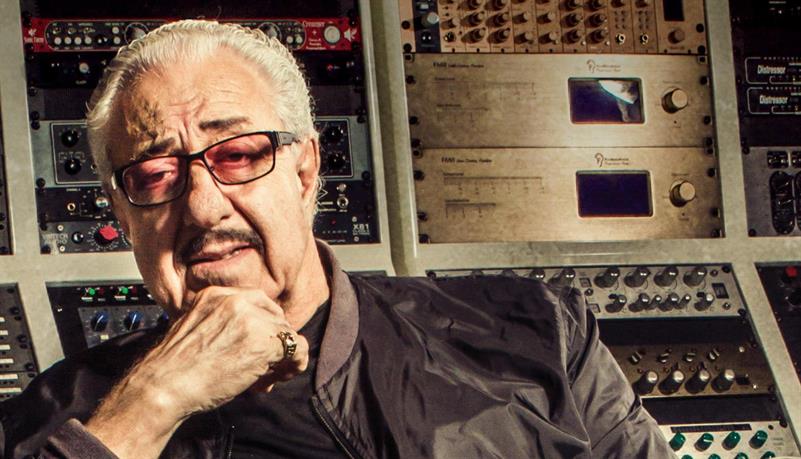
Jerry Marcellino
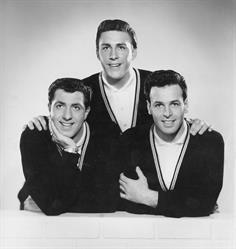
Jerry (left) and The Naturals, 1957
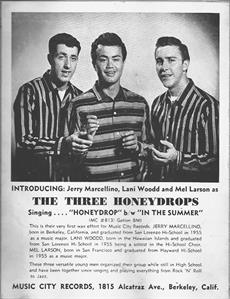
Jerry (left) and The Honeydrops, Music City Records, Berkeley, 1957.
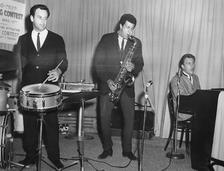
On Sax, Perry's Cafe, Oakland, 1965.
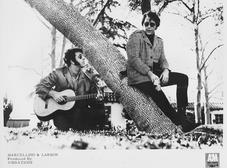
Jerry during his A&M days.
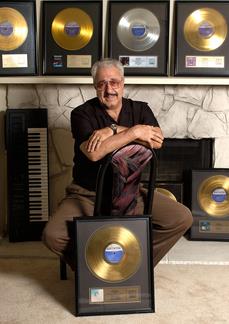
Spending quality time with a few of his hits.
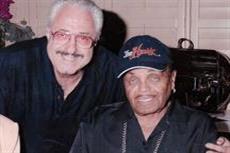
Jerry and Joe Jackson.
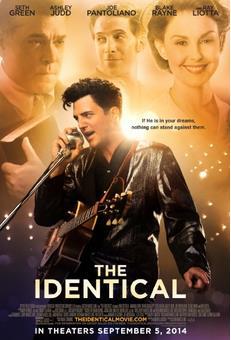
Theatrical one-sheet for Jerry's 2014 film, featuring his acclaimed score with music from the ’50s and ’60s and ’70s.
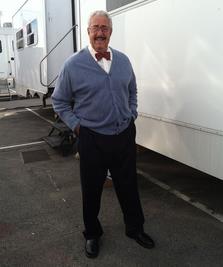
The man and his trailer, during production of "The Identical".
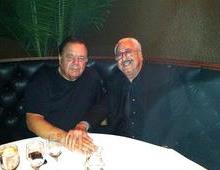
Jerry and Paul Sorvino.
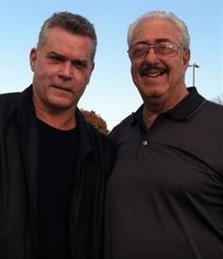
Jerry with Ray Liotta, one of the stars of "The Identical".
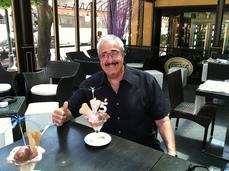
"Retire?"Jerry says incredulously. "And watch TV all day? You have to be kidding."
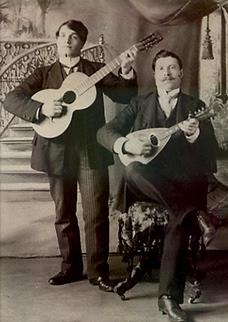
Music. It's in his DNA. This is Jerry's grandfather and great uncle in the early 1900s.